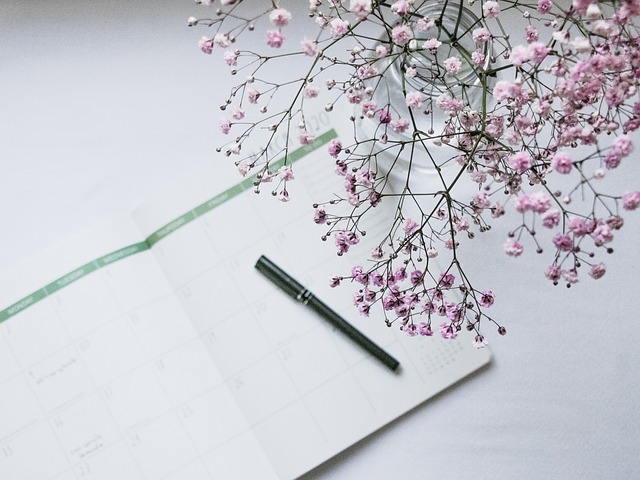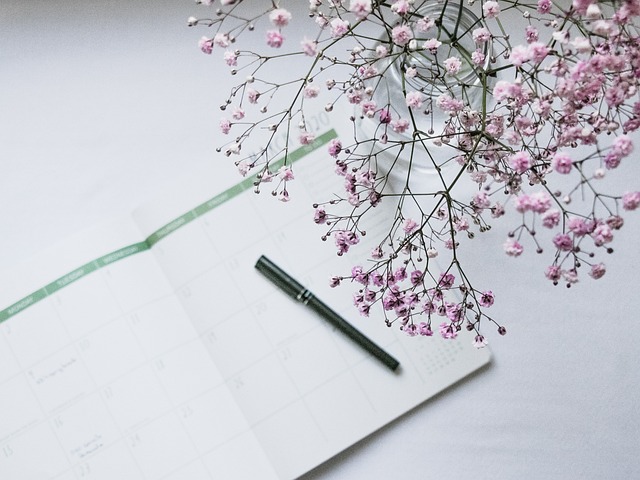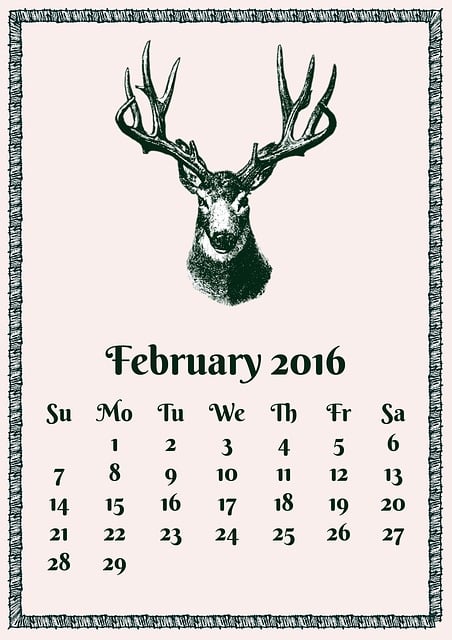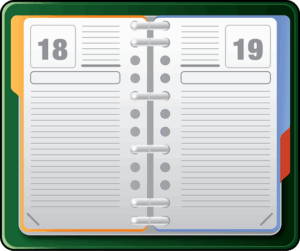Beginner’s Guide to Lunar Phases in Hijri Calendar
The Hijri Calendar, a lunar-based system used within Islam, differs from the Gregorian calendar with…….

The Hijri Calendar, a lunar-based system used within Islam, differs from the Gregorian calendar with a shorter 354-day year and dates tied to moon cycles. Its 12 months, marked by new moon sightings, impact significant Islamic practices like Ramadan and Eid celebrations. Understanding lunar phases is crucial for accurate dating and cultural events, fostering unity within the global Islamic community. This hybrid calendar's historical and cultural significance reveals diverse traditions and its ongoing influence across continents.
The Hijri Calendar, a lunar-based system deeply rooted in Islamic tradition, plays a significant role in religious observances and cultural practices worldwide. Understanding its intricate lunar phases is essential for synchronizing spiritual rituals, particularly during the holy month of Ramadan. However, navigating this calendar’s complexities can be daunting for beginners. This guide aims to demystify the process by offering a comprehensive overview of lunar phases within the Hijri framework. We’ll explore key concepts, decipher phase names, and provide practical insights to foster a profound appreciation for this timeless and precise timekeeping system.
- Understanding the Lunar Cycle in the Hijri Calendar
- Identifying Major Lunar Phases: New Moon to Full Moon
- Calculating Dates: Moon Phases in Hijri Months
- Cultural Significance and Traditions Around Lunar Phases
Understanding the Lunar Cycle in the Hijri Calendar

The Hijri Calendar, a lunar-based system used within Islam, offers a unique perspective on timekeeping compared to its Western counterpart, the Gregorian calendar. Understanding the lunar cycle in this ancient calendar is essential for those seeking to delve into Islamic history and practice. The Hijri calendar operates on a 354-day year, approximately ten days shorter than the 365-day Gregorian year. This difference stems from the fact that the Hijri calendar is based on actual moon cycles, while the Gregorian follows the sun’s path around Earth.
The lunar cycle in the Hijri calendar revolves around the sighting of the new moon, marking the beginning of each month. These months are known as “Hijri months,” with 12 in total, each with its unique name and characteristics. Unlike the Western calendar, which uses a fixed date for each month, the Hijri dates shift based on the lunar sightings, making it a truly dynamic system. This method of dating has significant historical records, especially in ancient Islamic texts and chronicles, where events are often referenced by Hijri years. The practice of hijri dating enables scholars to compare Islamic and Western calendars accurately, providing valuable context for historical events and religious milestones.
To illustrate the lunar cycle, consider the month of Ramadan, one of the most sacred months in Islam. It is the ninth month of the Hijri year and is observed by Muslims worldwide as a period of fasting from dawn until sunset. The start and end of Ramadan are determined by moon sightings, meaning the exact dates vary each year in the Gregorian calendar. This variation highlights the significance of the lunar cycle in the Hijri calendar’s functioning and its role in fostering a sense of community and unity among Muslims globally. Artistic representations of Hijri months, found in various cultural expressions, serve as tangible reminders of this connection to nature and time’s passage.
In practical terms, understanding the Hijri calendar’s lunar-based system offers insights into Islamic practices and traditions. It explains why certain Islamic events, like Eid al-Fitr and Eid al-Adha, are celebrated at different times each year in the Gregorian calendar. This knowledge encourages individuals to explore and appreciate the rich cultural tapestry of Islam, as well as fosters a deeper connection to religious observances.
Identifying Major Lunar Phases: New Moon to Full Moon

The Hijri calendar, an ancient lunar-solar hybrid system, offers a profound understanding of time distinct from its Gregorian counterpart. Its intricate design aligns celestial events with Islamic practices, making it a cornerstone for key religious observances like Ramadan. This guide aims to demystify one of the calendar’s most fundamental concepts: major lunar phases from New Moon to Full Moon.
The lunar cycle, approximately 29.5 days long, forms the backbone of the Hijri month. Each phase represents a unique celestial state, influencing various Islamic rituals and observances. For instance, the New Moon (Al-Qadr) marks the beginning of each Hijri month and holds significant spiritual importance, with many Muslims engaging in extra prayers during this time. As the moon waxes, we progress through phases like Half Moon (Ar-Rabi’ al-Awwal) and Three-Quarters Moon (Ar-Rabi’ al-Akhar), culminating in the Full Moon (Al-Ju’a). This natural rhythm not only dictates religious practices but also offers advantages for organizing Islamic holidays, such as Eid al-Fitr and Eid al-Adha, based on the lunar cycle.
For practical purposes, understanding these phases aids in accurately determining important dates, especially for events tied to Ramadan timing. Using the Hijri calendar allows Muslims worldwide to seamlessly align their spiritual observances with the lunar cycles. By converting Hijri dates to civil calendars, individuals can effectively plan activities and ensure they are in sync with Islamic traditions. This knowledge empowers believers to fully embrace the spiritual significance of each phase, fostering a deeper connection with their faith.
For instance, during the Full Moon, many communities celebrate Eid al-Fitr, marking the end of Ramadan. Accurately identifying this phase is crucial for setting the date for this joyous occasion. Converting Hijri dates to civil calendars using readily available tools or our expert guidance (find us at converting hijri to civil date) ensures a seamless experience for Muslims worldwide. This comprehensive understanding of lunar phases in the Hijri calendar enriches one’s spiritual practice and strengthens ties within the Islamic community.
Calculating Dates: Moon Phases in Hijri Months

Understanding moon phases is crucial for calculating Hijri dates, which are essential for daily planning and historical record keeping. The Hijri calendar, a lunar-solar hybrid, differs from the solar-based Gregorian calendar in that it relies on astronomical observations of the Moon’s phases to determine its months. This makes hijri dating particularly important for religious observances and cultural events.
To calculate Hijri dates accurately, one must track the cycles of the Moon. Each Hijri month begins with a new moon phase, marking the moment when the Moon and Sun align. This alignment is visible from Earth, signaling the start of a new lunar cycle. The phases progress through a series of waxing (increasingly illuminated) and waning (decreasingly illuminated) stages, culminating in a full moon before beginning anew.
Practical insights into hijri dates for daily planning involve recognizing that the calendar’s months do not always correspond to the solar year exactly. This difference stems from the lunar calendar’s approximately 11-day gap relative to the solar calendar. To bridge this gap, intercalary months are occasionally inserted into the Hijri calendar to realign it with seasonal changes.
Historical records of hijri dating demonstrate its long-standing significance in various cultures and civilizations. Ancient Islamic texts meticulously record lunar phases for chronological purposes, reflecting the importance of accurate hijri dates across generations. Today, many Muslim communities worldwide still rely on these traditional methods for determining religious festivals, holidays, and daily prayers.
Remember that the Hijri calendar’s reliance on moon phases makes it a unique and nuanced dating system compared to solar calendars like the Gregorian. By understanding these phases and their impact on hijri dates, individuals can effectively plan within the context of this rich historical and cultural tradition. For more detailed insights, consider giving us a call at Global Adoption of Hijri Systems to explore further tailored advice.
Cultural Significance and Traditions Around Lunar Phases

The Hijri calendar, with its lunar basis, holds profound cultural significance within Islamic communities worldwide. Its use is rooted in the religious practices of Islam, where the phases of the moon play a pivotal role in marking time and guiding spiritual observances. The Hijri system, with its emphasis on lunar cycles, offers a unique perspective on timekeeping compared to the Gregorian calendar prevalent globally. Understanding these lunar phases is essential for those seeking to delve into the rich cultural traditions that surround them.
In Islamic tradition, the Hijri calendar’s origins trace back to Prophet Muhammad’s migration from Mecca to Medina in 622 CE, marking a significant event in religious history. This event, known as the Hijra, inspired the name of the calendar. The lunar nature of the Hijri system dictates that each month begins with the new moon, making it approximately 29 or 30 days long. This cycle directly ties into various cultural practices and celebrations across Muslim-majority countries. For instance, the start of Ramadan, a holy month of fasting, is determined by the sighting of the crescent moon, as prescribed in the Quran. Similarly, Eid al-Fitr, marking the end of Ramadan, is celebrated when the new moon is sighted after 29 or 30 days of fasting. These traditions not only regulate religious observances but also bring communities together in shared cultural experiences.
The phases of the moon within the Hijri system have sparked various cultural practices and folklore across different regions. In some areas, each phase is associated with specific rituals or beliefs, passed down through generations. For example, certain communities might hold gatherings to observe and celebrate the full moon, engaging in traditional songs and dances. The lunar cycle also influences agricultural activities, with many farmers using the phases as guides for planting and harvesting. This connection between religion, culture, and nature forms a vital part of Islamic identity and heritage, offering a unique perspective on time, spirituality, and community celebration within the context of the Hijri calendar.
To truly appreciate the cultural richness tied to lunar phases, one must explore these traditions in their diverse manifestations. Give us a call at Hijri Calendar History and Origin to learn more about how these ancient practices continue to shape modern Islamic cultures worldwide. By understanding the etymology and historical significance of the Hijri calendar, individuals can gain profound insights into the ways it has influenced and continues to enrich communities across continents.
By unraveling the complexities of the Hijri Calendar’s lunar cycle, this guide has empowered readers with a profound understanding of its key phases. From the elusive New Moon to the vibrant Full Moon, each stage holds cultural and practical significance within this ancient timekeeping system. Mastering the calculation of moon phases in Hijri months opens doors to navigating religious observances and traditions, enriched by centuries of historical context. This comprehensive knowledge serves as a solid foundation for further exploration, allowing individuals to fully appreciate and participate in the rich tapestry of lunar-based practices within the Hijri Calendar.
About the Author
Dr. Sarah Al-Jamil, a renowned Islamic calendar expert and astrobiologist, has dedicated her career to unraveling the complexities of lunar-solar calendars. With a Ph.D. in Astronomy from MIT, she is acclaimed for her beginner-friendly guides, including “The Lunar Phase Enigma: A Journey Through the Hijri Calendar.” Sarah contributes regularly to scientific journals and is an active member of the International Society for Temporal Standards, ensuring her work remains at the forefront of authority.
Related Resources
Here are 5-7 authoritative resources for an article about a beginner’s guide to understanding lunar phases in the Hijri calendar:
- National Geographic (Educational Website): [Offers accessible explanations of scientific concepts with visual aids.] – https://www.nationalgeographic.org/search/?q=lunar+phases
- NASA – Solar System Exploration (Government Portal): [Provides in-depth, scientifically accurate information about celestial bodies and their cycles.] – https://solarsystem.nasa.gov/moon/
- Islamic Calendar Calculator (Online Tool): [Allows users to calculate lunar phases and dates for Islamic holidays, offering practical application of the concept.] – https://www.calendardate.net/islamic-calendar-calculator/
- University of Cambridge – Department of History & Philosophy of Science (Academic Study): [Offers scholarly insights into the historical and scientific understanding of lunar phenomena.] – https://www.hps.cam.ac.uk/research/history-of-science/astronomy-and-time
- Islamic Foundation (Community Resource): [Provides educational materials and resources about Islam, including explanations of Islamic calendar practices.] – https://www.islamicfoundation.org/
- TimeandDate.com (Online Reference): [Comprehensive resource for world clocks, time zones, and calendars, with a dedicated section on the Hijri calendar.] – https://www.timeanddate.com/calendar/hijri-calendar.html
- The British Museum – Understanding the Islamic Calendar (Curated Online Exhibition): [Offers an interactive and visual exploration of the Hijri calendar’s origins and significance.] – <a href="https://www.britishmuseum.org/collection/object/G2017-648″ target=”blank” rel=”noopener noreferrer”>https://www.britishmuseum.org/collection/object/G_2017-648






